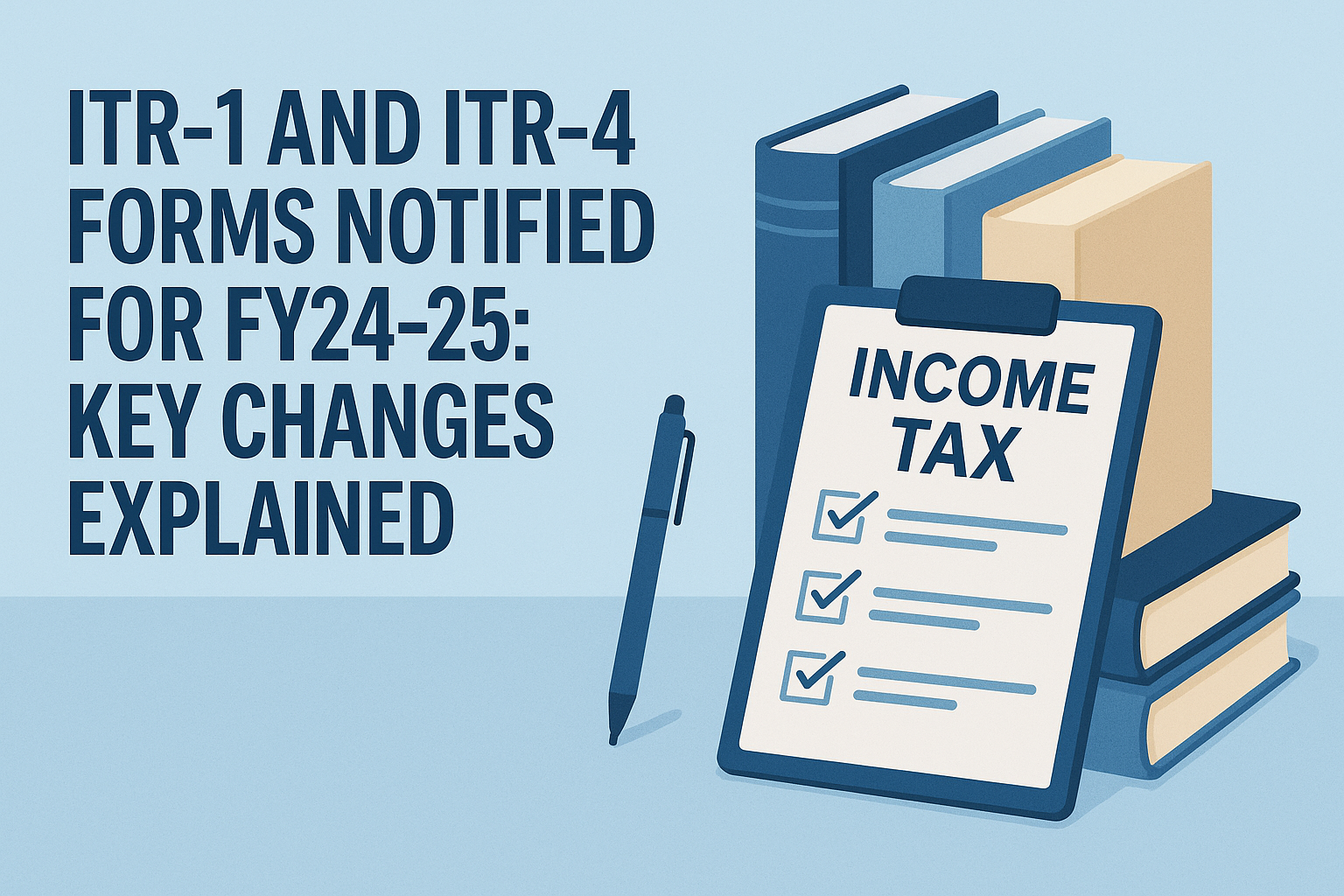
The Income Tax Department has notified ITR-1 (Sahaj) and ITR-4 (Sugam) forms for Assessment Year 2025-26. With this, return filing for Financial Year 2024-25 is set to begin soon.
This year, the ITR-1 form has been revised.
Taxpayers with long-term capital gains (LTCG) under Section 112A can now file ITR-1, provided the gains are within the threshold limit.
Earlier, such taxpayers had to use ITR-2.
The change aims to simplify tax filing for small investors.
The revised ITR-1 form includes a new section: “Income on which no tax is payable: Long Term capital gains u/s 112A not chargeable to Income-tax.”
Taxpayers with LTCG up to ₹1.25 lakh on listed equity shares, equity mutual funds, or business trusts can file ITR-1. However, this form is not applicable for:
Short-term capital gains
LTCG from immovable property
LTCG under Section 112A where tax is payable
Cases with carried forward or brought forward losses
What about ITR-4?
The ITR-4 form is meant for:
Resident Individuals, HUFs, and Firms (other than LLPs)
Total income of up to ₹50 lakh
Income from business/profession calculated under presumptive schemes (Sections 44AD, 44ADA, 44AE)
LTCG under Section 112A up to ₹1.25 lakh
When not to use ITR-4?
You should not use ITR-4 if:
You’re a director in a company
You’ve invested in unlisted shares
You’ve foreign assets or income
Your agricultural income exceeds ₹5,000
You’ve deferred tax on ESOPs
The income tax e-filing portal is expected to enable return filing for FY 2024-25 soon, both online and offline.
Taxpayers must choose the correct ITR form based on their income type and financial profile. Not everyone can use ITR-1 or ITR-4. The department issues different forms to match the complexity of taxpayers’ incomes.